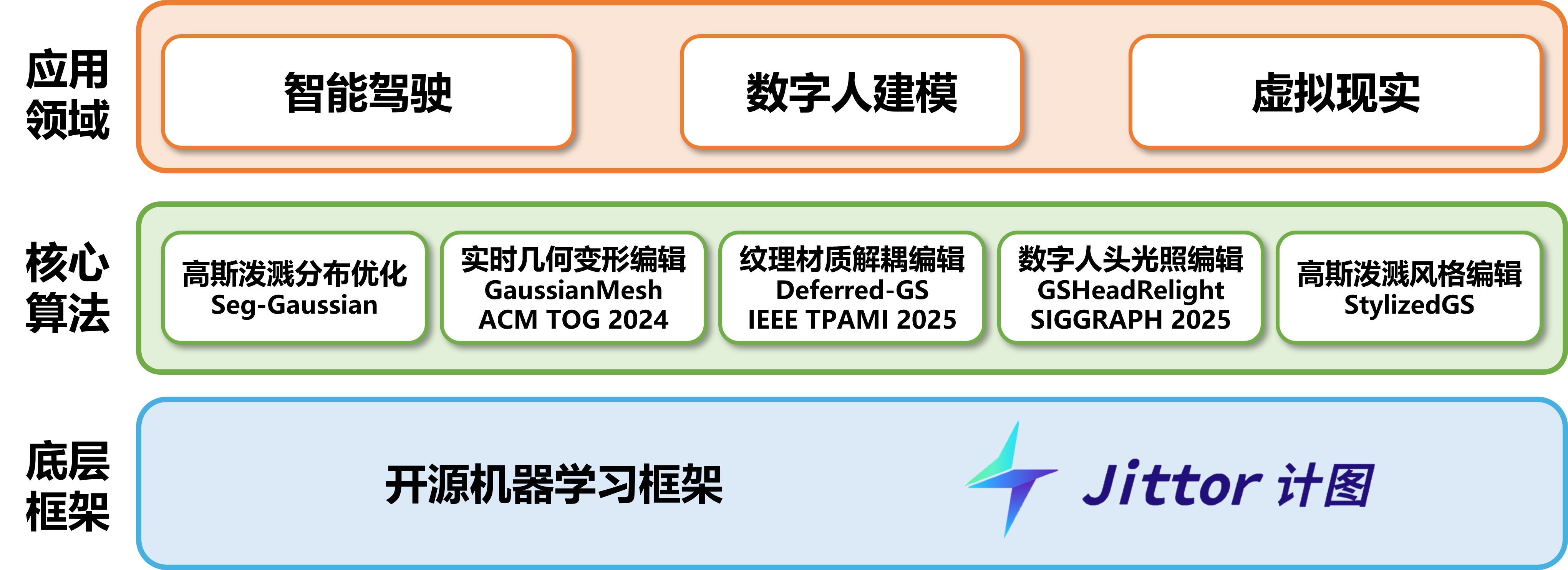
About JGaussian
In recent years, 3D Gaussian Splatting has emerged as an efficient differentiable 3D representation method, demonstrating strong potential in 3D reconstruction, digital human modeling, autonomous driving, and virtual reality. Compared to traditional volume rendering and mesh modeling approaches, Gaussian representation offers advantages of fast rendering speed, strong expressiveness, and hardware friendliness, making it suitable for multi-view synthesis and scene modeling tasks.
However, Gaussian Splatting still faces challenges in several key areas: large-scale non-rigid deformation struggles to maintain structural coherence and geometric consistency, lacking stable geometric constraint mechanisms; lighting and material properties are difficult to decouple, leading to artifacts or blurring in interactive editing or relighting tasks; the distribution of Gaussian splats lacks optimization, resulting in blurred rendering in occluded regions.
To address these issues, this project integrates a series of Gaussian representation methods on the domestic deep learning framework Jittor, developing and open-sourcing the JGaussian library. JGaussian aims to provide unified algorithm interfaces and efficient training frameworks, lowering the barrier for Gaussian method reuse and promoting the practical application of key technologies in this field.